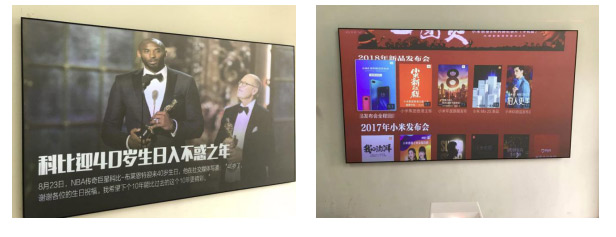Think about this … would you like to have a huge 120″ flat panel TV in your entertainment room? If such a thing existed most of us couldn’t afford it, and if we could we couldn’t get it through our front doors. But here is some good news … you can get that same giant TV effect with a projector and one of today’s Ambient Light Rejecting (ALR) screens. They are designed to give you a big screen picture with sparkling high contrast and solid color saturation in a well-lit room. The “Projector + ALR Screen” combo is ideal for parties, gaming, or TV and movie viewing during daylight hours, or in the evening when you just don’t want to turn the room lights off.
How We Tested the Screens
Since these screens are designed for use in ambient light, we evaluated their performance two ways. First we used window light illumination from the side, then we added low-wattage ceiling mounted floods placed above the screens and directed downward. The tests were done in a room with large, north-facing picture windows along one wall. All measurements were taken at mid-day when diffused light from the north sky was at its brightest. The brightest concentration of incoming light from the windows was striking the screens at a 50 degree angle from center. In addition, the test room has white walls, carpet, and ceiling, so there was plenty of soft indirect reflected ambient light in the environment. In short, this room might be typical of a well-lit residential multipurpose room that you’d want to use for TV viewing or gaming during daylight hours.
After taking luminance, contrast, and half gain measurements under the window light conditions, we added four 20-watt ceiling mounted floods to see how additional light from above the screens would further impact contrast, black levels, and saturation. This light from above was directed onto the screens at a 30 degree angle. This was intended as a torture test to see how the screens respond to light from above. (Hopefully nobody would intentionally direct floods onto a projection screen in a real installation.)
Throughout these tests we used an Xiaomi laser projector, a native 1080p UST projector designed for ambient light use. We set it to Bright Cinema mode so it was putting out 2800 ANSI lumens. The throw distance was 1 feet, and the image width was 100″.

Note on the Screen Selection
The screen material has a triangular design on the surface, making it absorb the ambient light from surroundings and refect the projection images direcly to the viewers to create a best image quality.

If you find this review has been helpful to you, I would be happy to hear your suggestions on additional screens to include in further group reviews of this kind. Please take a moment to drop me your thoughts in the comments box below.
Thanks kindly for your interest.


